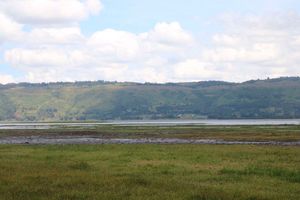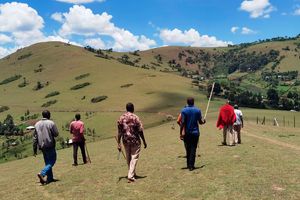The world is losing most of its healthy land: Report

What you need to know:
- The data released by the United Nations Convention to Combat Desertification (UNCCD) reflects how much healthy land was lost in a five-year period spanning between 2015 and 2019 from about 126 countries.
New data shows that the world loses at least 100 hectares of healthy and productive land each year, leading to food and water insecurity issues globally. The data released by the United Nations Convention to Combat Desertification (UNCCD) reflects how much healthy land was lost in a five-year period spanning between 2015 and 2019 from about 126 countries.
It is a precursor to a global meeting by world experts and global leaders who will convene next month for a four-day conference in Samarkand, Uzbekistan, to attend the 21st session of the UNCCD Committee for the Review of the Implementation of the Convention.
The leaders usually meet to review the world’s progress on land degradation neutrality (LDN) and focus on issues like enhancing drought resilience, promoting women’s land rights and combating sand and dust storms.
UNCCD’s Executive Secretary Ibrahim Thiaw said the data offers an eye-opening insight into rapid loss of healthy and productive land around the world, with dire consequences for billions of people.
“We are seeing some ‘bright spots’—countries effectively tackling desertification, land degradation and drought. As we gather in Uzbekistan next month to review global progress towards ending land loss, the message is clear: land degradation demands immediate attention,” he said. Bright spots refer to a form of land improvement that reverses the impacts of degradation restoring a healthierw land.
The data shows a stark difference in the way land is degrading in different regions. The regions of Eastern, Central Asia, Latin America and the Caribbean have the most severe degradation, which affects at least 20 per cent of their land. On the other hand, the sub-Saharan African region, Western and Southern Asia, Latin America and the Caribbean experienced land degradation at rates faster than the global average.
Uzbekistan reported the highest proportion of degraded land (26.1 per cent) in the Central Asia region. It also saw the largest decrease – from 30 per cent to 26 per cent compared to 2015. “A total of three million hectares of land in Uzbekistan have been degraded due to the drying of the Aral Sea.
Between 2018-2022, Uzbekistan carried out saxaul planting on an area of 1.6 million ha to eliminate salt and dust emissions from the drained bottom of the Aral Sea,” showed a statement from UNCCD. UNCCD warns that despite land degradation trends varying by region, if current trends persist, the world will need to restore about 1.5 billion hectares of degraded land by 2030 to reach LDN targets enshrined in the Sustainable Development Goals.
Barron Orr, UNCCD chief scientist, said even as global trends are going in the wrong direction, it is still possible to not only meet but exceed land degradation neutrality goals. “This can be done by stopping further degradation while accelerating efforts on existing commitments to restore one billion hectares of land by 2030 with funding and action hand-in-hand,” he said.
So far about 109 countries have set voluntary Land Degradation Neutrality targets for 2030, with another 21 planning to do that. Kenya is one of the countries that has committed to an LDN target with an aim to achieve no net loss of healthy ecosystems by 2030 and restore almost 5.1 million hectares of land.
This commitment was led by former Environment Cabinet Secretary Judy Wakhungu, who promised that the government will trickle down the targets to counties and also focus on implementation. In a statement, UNCCD said that between 2016 and 2019, approximately USD$ 5 billion in bilateral and multilateral sources flowed into global efforts to fight desertification, land degradation and drought.





